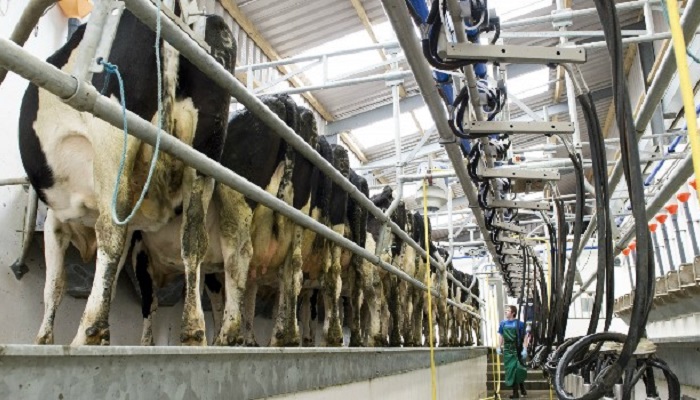31 July 2023
Milking interval effects on milk yield

Martina Gormley and Noirin McHugh explain how implementing a 16:8 milking interval may be beneficial for dairy farmers to shorten the standard working day, thus bringing benefits to the dairy farmer and employees alike.
Farm structure in Ireland has seen a dramatic change in recent years. The traditional owner-operator plus additional family help model that previously could manage an average herd size is finding it increasingly challenging to cope with increased herd size.
The sustainability of dairy farming increasingly relies on recruiting people to work on farms. However, farmers need to be able to provide employment opportunities where pay and conditions of work are at least as attractive as alternative careers.
Previous studies with dairy farm employees have found that hours worked on dairy farms can make these employment opportunities unattractive. Evening finish time was cited as the critical issue for employees. As Irish farms are competing with industries that typically offer a 5-6pm finish time, this is an area that needs to be examined.
Data
Milk recording data from 2,366 herds across 23 counties over a one-year period (2020) were analysed. Across all herds, the mean PM milking finish time was 18:43 and the length of the working day was nearly 12 hours. However, there was large variation between herds, with PM milking finish time ranging from 16:39 to 23:22 and the length of the working day ranging from 8.5 hours to 16.4 hours.
Table 1: Mean milking time from 2,366 herds recorded during 2020
| Mean time | |
|---|---|
| Start AM | 07:23 |
| Finish AM | 08:55 |
| Start PM | 17:14 |
| Finish PM | 18:43 |
| Total hours spent milking (hours) | 02:58 |
| Milking interval (hours) | 09:48 |
| Average herd size | 118 |
Relationship between milking interval and milk (kg/cow/day)
Milking interval is defined as the time from when the first cluster goes on in the morning to the time the first cluster goes on again in the evening. To reduce the length of the working day in a twice daily milking scenario, previous research has shown a 16:8 hour interval split is feasible, for example morning milking start time of 07:00 and 15:00.
However, in this study, the mean milking interval was closer to 10 hours (Table 1). One of the reasons for having a longer milking interval in the evening is the legitimate concern of reducing milk kg per cow. However, data collected on commercial herds for the current study showed no relationship between milking interval and daily milk yield. Milking interval had no effect on SCC.
Seasonal variation in milking time
A demanding daily workload is understandably cited as a reason why milking times cannot be changed on many dairy farms. Previous labour studies have shown that spring is the busiest time of the year for spring-calving herds. With this in mind one might conclude that milking intervals could potentially be shortened later in the season.
However, our analysis found that there is very little change in mean milking interval by season; averaging 09:48 in spring, 09:51 in summer, 09:46 in autumn and 09:45 in winter. This suggests that longer milking intervals are fixed and habitual on many farms, rather than being dictated by workload.
Practical implications
Regardless of herd size, some adaptations to work routine may need to be made to ensure a good quality of life for both farmers and employees. A long milking interval is a driver of late PM milking finish time and long working days. Reducing milking interval in line with the 16:8 target interval has no effect on milk kg per cow per day. This provides an opportunity to shorten the standard working day on farms with no milk yield loss. This has benefits for the farmer and potential employee alike. Reviewing how work is organised and executed on the farm is crucial to changing milking interval.
This data was present at the recent Connelly family Milk Quality Farm Walk in Tuam, Co. Galway. For more information on the Connelly family, winners of the NDC and Kerrygold Quality Milk Award for 2022, click here.
